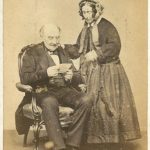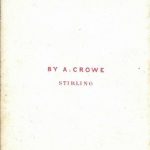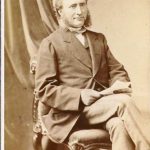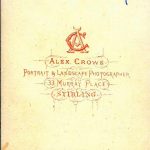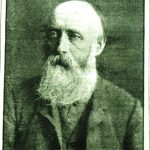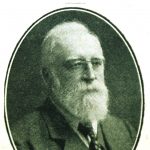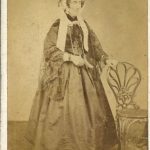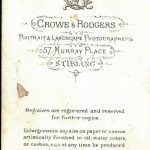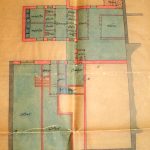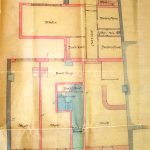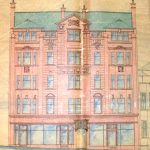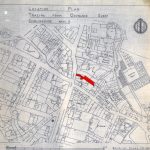Stirling Council Archives accepts deposits of private collections. The Dr Jamieson of Barnach (PD78) collection includes some family photographs taken by Stirling photographers, Crowe and Rodgers.
These small photographs are known as cartes de visite. The photos were typically albumen prints which were then mounted on a card and they became popular in the 1860s. These cards would be exchanged between friends and acquaintances, becoming so popular they named it ‘cartomania’.
Alexander Crowe was born in Fourdoun, Kincardineshire. After serving an apprenticeship as a cabinet maker he decided to focus his attentions on photography. In 1859 Crowe arrived in Stirling to start his own photography business at 33 Murray Place. By 1861 he was already exhibiting his work at the Photographic Society of Scotland Exhibition in Edinburgh. The 1870-71 Stirling Directory lists Crowe as one of only two photographers in Stirling at this time. The other being John Henderson of King Street.
William M. Rodgers grew up in Montrose where his father founded one of the first photographic businesses in Scotland. In 1871 he came to Stirling to work as an assistant for Crowe. Only a few years later Rodgers had become a Partner in the business renamed Crowe & Rodgers. By this time Crowe and his wife, Mary Soutter, had moved to Blairgowrie and Crowe retired from the business in 1876.
Rodgers continued the business under the name of Crowe & Rodgers but by the late 1870s he was operating out of new premises at 57 Murray Place. Stirling Council Archives holds building plans for the Burgh. In 1902 plans were submitted to amend the dwelling and business premises at 57 Murray Place. This building was spread over six floors.
Rodgers divided the front of the ground floor into three separate shop units which would have been rented out. At the back of the building were the rooms he used for his business, including studio, dark room, retouching room, finishing room, enlarging room and dressing rooms. A printing room was located in the basement.
Rodgers died at his Victoria Square residence in June 1926. His obituary in the Stirling Journal declares that “under his able direction the business became the leading one of its kind in the district.” It also reveals that he had been a member of Stirling Burgh School Board, Director of the Stirling Gas Light Company and helped with the creation of the Stirling Fine Art Association. He also enjoyed sports and had been a member of the Old Stirling Curling Club and of the Stirling Bowling Club.
Rodgers’ son William continued the business after his death. William moved the premises to 45 Port Street in the 1930s. Stirling Burgh building plans show alterations he planned to make to the building in 1938.
Based on burgh valuation rolls it appears that William sold 43-45 Port Street to Marks & Spencers in the 1950s. Presumably the business ceased operating at this time.
